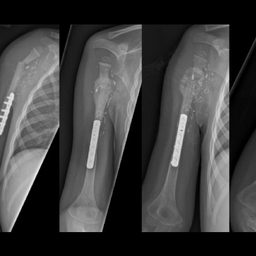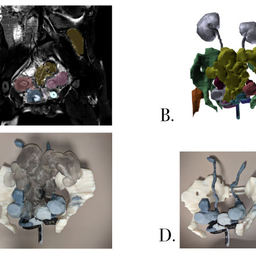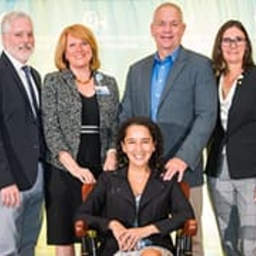Case Study: Osteosarcoma and Limb Salvage Surgery
Nov 13, 2020
Read this case study about a patient who received treatment for osteosarcoma and underwent limb salvage surgery at Children’s Hospital of Philadelphia.
Every person on your child’s team has the same goal: to give your child the best possible care. We provide medical care, emotional support and much more.
Nov 13, 2020
Read this case study about a patient who received treatment for osteosarcoma and underwent limb salvage surgery at Children’s Hospital of Philadelphia.
Aug 24, 2020
The CHOP-engineered therapy overcomes common drug resistance and has potential to elicit fewer toxicities than most cancer treatments.

Jan 31, 2020
This case study highlights a multimodal approach to surgical management of osteosarcomas in young children, maximizing control while providing a functional limb that will grow with the child.
Jan 24, 2020
Patrick J. Grohar, MD, PhD, focuses on developing therapies for a cancer that’s rare in adults but relatively common in the pediatric population.
Nov 26, 2019
An unrelenting, deep bone pain that woke him up from sleep is what led to Jake’s diagnosis just last March of Ewing sarcoma, one of the most common bone tumors in children and adolescents.

Aug 7, 2019
The CHAMP Lab at CHOP has created numerous 3D models to aide in the surgical care of patients with complex congenital anomalies and tumors.
Feb 7, 2019
A CHOP research leader received an award from the University City Science Center to help develop a new T-cell based treatment for a childhood cancer.

Sep 4, 2019
CHOP recipient, physician-scientist Dr. Yael Mossé, is innovating targeted, less toxic therapies for cancer affecting mostly infants and young children.
Nov 16, 2018
Researchers at CHOP are working to discover the fundamental mechanisms that subvert normal neural development and orchestrate neuroblastoma tumorigenesis, and then to translate this knowledge into more effective and less toxic therapies.
Nov 10, 2017
We present three cases of Ewing sarcoma treated at Children's Hospital of Philadelphia (CHOP), where a multidisciplinary team of experts focuses on curing the patients as well as preserving limb function and growth potential.